Camila Laranjeira
Neglected Risks: The Disturbing Reality of Children's Images in Datasets and the Urgent Call for Accountability
Apr 20, 2025Abstract:Including children's images in datasets has raised ethical concerns, particularly regarding privacy, consent, data protection, and accountability. These datasets, often built by scraping publicly available images from the Internet, can expose children to risks such as exploitation, profiling, and tracking. Despite the growing recognition of these issues, approaches for addressing them remain limited. We explore the ethical implications of using children's images in AI datasets and propose a pipeline to detect and remove such images. As a use case, we built the pipeline on a Vision-Language Model under the Visual Question Answering task and tested it on the #PraCegoVer dataset. We also evaluate the pipeline on a subset of 100,000 images from the Open Images V7 dataset to assess its effectiveness in detecting and removing images of children. The pipeline serves as a baseline for future research, providing a starting point for more comprehensive tools and methodologies. While we leverage existing models trained on potentially problematic data, our goal is to expose and address this issue. We do not advocate for training or deploying such models, but instead call for urgent community reflection and action to protect children's rights. Ultimately, we aim to encourage the research community to exercise - more than an additional - care in creating new datasets and to inspire the development of tools to protect the fundamental rights of vulnerable groups, particularly children.
YOLOv7 for Mosquito Breeding Grounds Detection and Tracking
Oct 16, 2023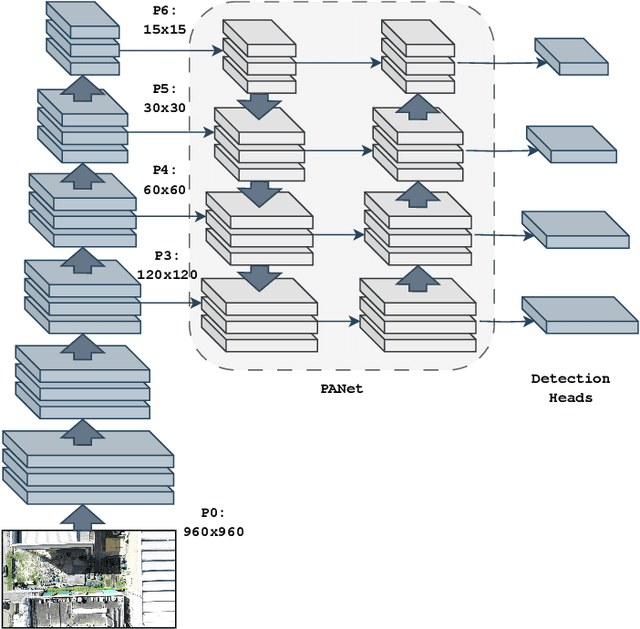
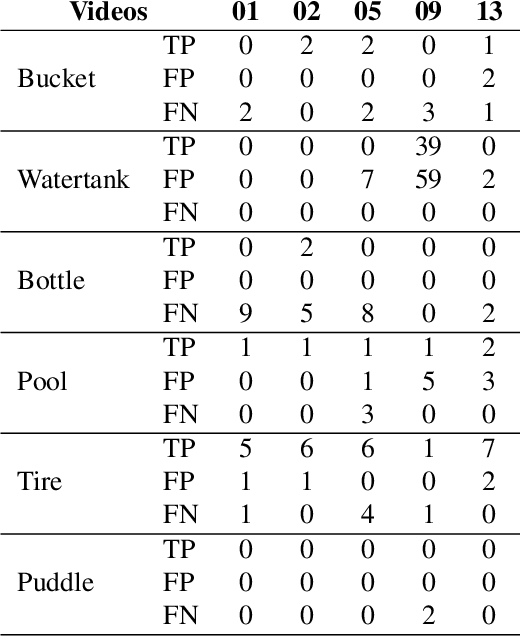
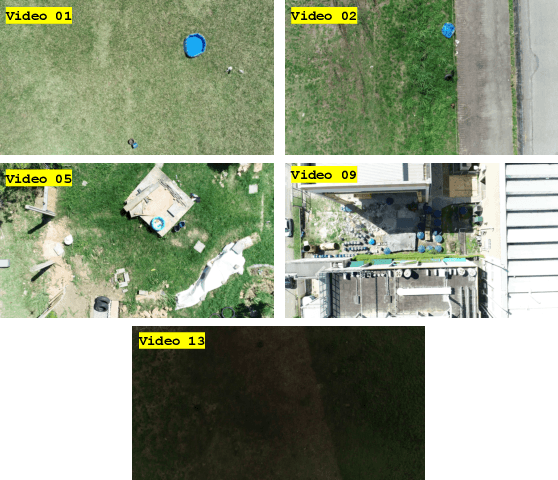
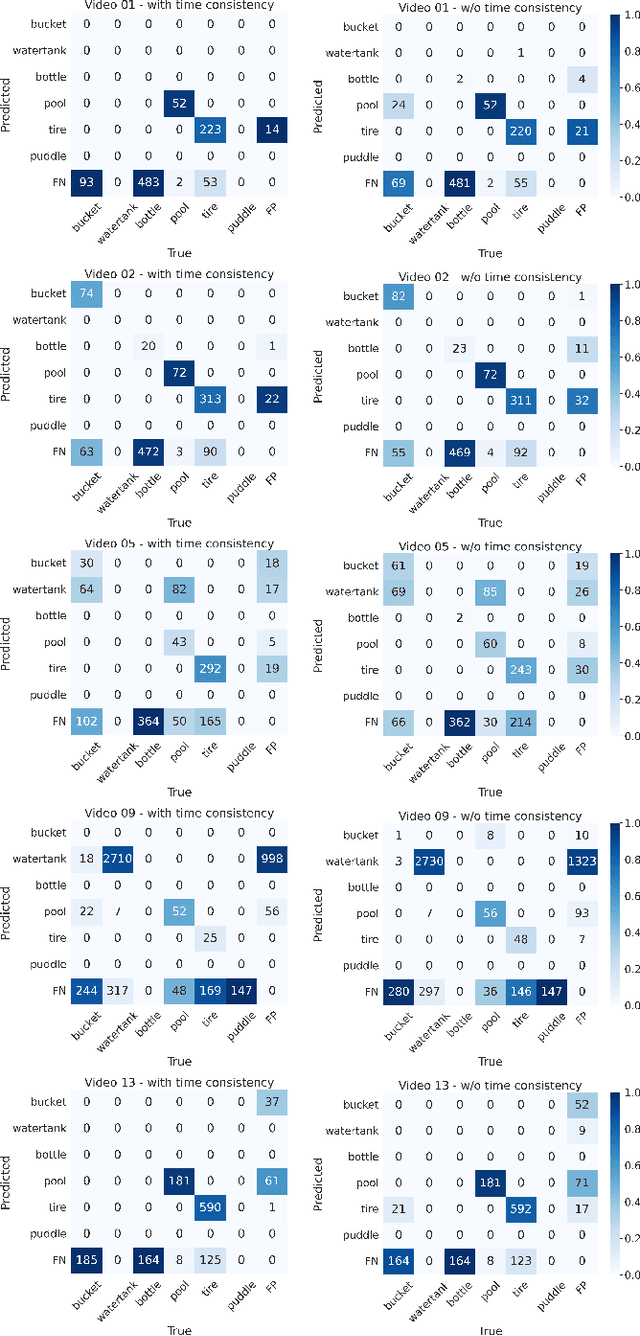
Abstract:With the looming threat of climate change, neglected tropical diseases such as dengue, zika, and chikungunya have the potential to become an even greater global concern. Remote sensing technologies can aid in controlling the spread of Aedes Aegypti, the transmission vector of such diseases, by automating the detection and mapping of mosquito breeding sites, such that local entities can properly intervene. In this work, we leverage YOLOv7, a state-of-the-art and computationally efficient detection approach, to localize and track mosquito foci in videos captured by unmanned aerial vehicles. We experiment on a dataset released to the public as part of the ICIP 2023 grand challenge entitled Automatic Detection of Mosquito Breeding Grounds. We show that YOLOv7 can be directly applied to detect larger foci categories such as pools, tires, and water tanks and that a cheap and straightforward aggregation of frame-by-frame detection can incorporate time consistency into the tracking process.
Seeing without Looking: Analysis Pipeline for Child Sexual Abuse Datasets
Apr 29, 2022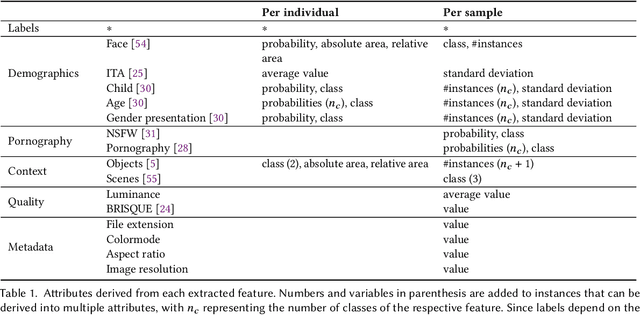

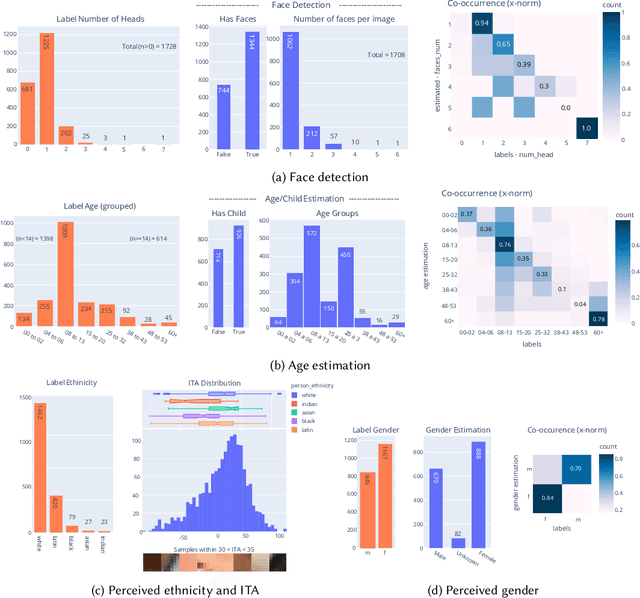

Abstract:The online sharing and viewing of Child Sexual Abuse Material (CSAM) are growing fast, such that human experts can no longer handle the manual inspection. However, the automatic classification of CSAM is a challenging field of research, largely due to the inaccessibility of target data that is - and should forever be - private and in sole possession of law enforcement agencies. To aid researchers in drawing insights from unseen data and safely providing further understanding of CSAM images, we propose an analysis template that goes beyond the statistics of the dataset and respective labels. It focuses on the extraction of automatic signals, provided both by pre-trained machine learning models, e.g., object categories and pornography detection, as well as image metrics such as luminance and sharpness. Only aggregated statistics of sparse signals are provided to guarantee the anonymity of children and adolescents victimized. The pipeline allows filtering the data by applying thresholds to each specified signal and provides the distribution of such signals within the subset, correlations between signals, as well as a bias evaluation. We demonstrated our proposal on the Region-based annotated Child Pornography Dataset (RCPD), one of the few CSAM benchmarks in the literature, composed of over 2000 samples among regular and CSAM images, produced in partnership with Brazil's Federal Police. Although noisy and limited in several senses, we argue that automatic signals can highlight important aspects of the overall distribution of data, which is valuable for databases that can not be disclosed. Our goal is to safely publicize the characteristics of CSAM datasets, encouraging researchers to join the field and perhaps other institutions to provide similar reports on their benchmarks.
A Robust Indoor Scene Recognition Method based on Sparse Representation
Aug 24, 2017



Abstract:In this paper, we present a robust method for scene recognition, which leverages Convolutional Neural Networks (CNNs) features and Sparse Coding setting by creating a new representation of indoor scenes. Although CNNs highly benefited the fields of computer vision and pattern recognition, convolutional layers adjust weights on a global-approach, which might lead to losing important local details such as objects and small structures. Our proposed scene representation relies on both: global features that mostly refers to environment's structure, and local features that are sparsely combined to capture characteristics of common objects of a given scene. This new representation is based on fragments of the scene and leverages features extracted by CNNs. The experimental evaluation shows that the resulting representation outperforms previous scene recognition methods on Scene15 and MIT67 datasets, and performs competitively on SUN397, while being highly robust to perturbations in the input image such as noise and occlusion.
 Add to Chrome
Add to Chrome Add to Firefox
Add to Firefox Add to Edge
Add to Edge